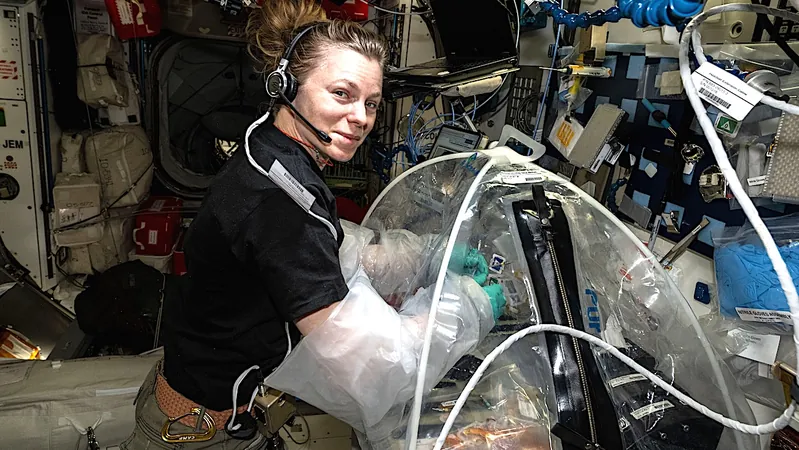
Revolutionary Discovery: Warped Planet-Forming Discs Redefine Our Understanding of Planetary Birth
2025-09-01
Author: Li
Breaking the Mold of Planetary Formation
In an eye-opening revelation, scientists have shattered the long-held belief that protoplanetary discs are neatly arranged and flat. A groundbreaking study published in the Astrophysical Journal Letters shows that these discs are often warped, challenging our understanding of how planets come into existence.
The Surprising Findings from ALMA
Using the powerful Atacama Large Millimetre/submillimetre Array (ALMA), researchers explored the chaotic nature of planetary birth environments during the exoALMA programme. They discovered protoplanetary discs tilting by an astonishing half to two degrees. These small misalignments intriguingly mirror the inclinations seen in our own Solar System, suggesting that the processes shaping planets may be messier than previously thought.
Expert Insights on the Implications
Dr. Andrew Winter from Queen Mary University of London remarked, "Our findings imply that protoplanetary discs are more complex than we ever imagined. The slight warping could be a game-changer in understanding planet formation, particularly since these angles are reminiscent of the inclinations among planets in our Solar System."
Challenging Traditional Views of Planet Formation
Dr. Myriam Benisty from the Max Planck Institute for Astronomy added, "The revelations from exoALMA have unveiled unexpected large-scale structures within the planet-forming discs. These warped formations challenge the notion of orderly planet formation and open up exciting questions for future research."
Mapping the Motion: How Warps Change Everything
Through meticulous analysis of Doppler shifts in radio emissions from carbon monoxide gas, the team mapped the motion within the discs with unprecedented accuracy. Their careful modelling revealed that different regions of each disc tilt in relation to one another, uncovering the warps. These distortions account for various spiral patterns, turbulence, temperature differences, and dynamic gas motions within the discs.
The Link Between Stellar Feeding and Planet Creation
The researchers suspect that these warps may be tied to how much material the young star collects at its center, hinting at a complex relationship between stellar feeding and the regions where planets form. The gravitational tug of unseen stellar companions or interactions within the swirling gas and dust may also be contributors.
A New Perspective on Planetary Nurseries
This significant discovery offers fresh insights into how turbulence and mass transport within discs influence planetary formation. By debunking the serene, flat nursery concept for new worlds, it provides a more dynamic framework for understanding the creation of diverse planetary systems.

 Brasil (PT)
Brasil (PT)
 Canada (EN)
Canada (EN)
 Chile (ES)
Chile (ES)
 Česko (CS)
Česko (CS)
 대한민국 (KO)
대한민국 (KO)
 España (ES)
España (ES)
 France (FR)
France (FR)
 Hong Kong (EN)
Hong Kong (EN)
 Italia (IT)
Italia (IT)
 日本 (JA)
日本 (JA)
 Magyarország (HU)
Magyarország (HU)
 Norge (NO)
Norge (NO)
 Polska (PL)
Polska (PL)
 Schweiz (DE)
Schweiz (DE)
 Singapore (EN)
Singapore (EN)
 Sverige (SV)
Sverige (SV)
 Suomi (FI)
Suomi (FI)
 Türkiye (TR)
Türkiye (TR)
 الإمارات العربية المتحدة (AR)
الإمارات العربية المتحدة (AR)